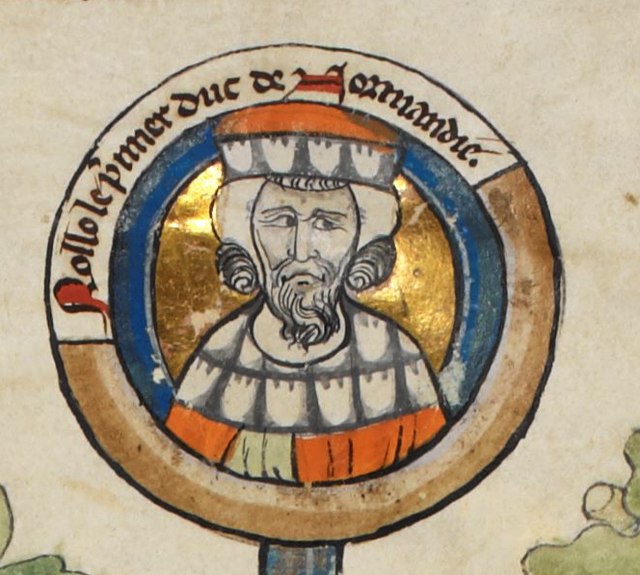In the Middle Ages, the duke of Normandy was the ruler of the Duchy of Normandy in north-western France. The duchy arose out of a grant of land to the Viking leader Rollo by the French king Charles the Simple in 911. In 924 and again in 933, Normandy was expanded by royal grant. Rollo's male-line descendants continued to rule it until 1135, and cognatic descendants ruled it until 1204. In 1202 the French king Philip II declared Normandy a forfeited fief and by 1204 his army had conquered it. It remained a French royal province thereafter, still called the Duchy of Normandy, but only occasionally granted to a duke of the royal house as an appanage.
"La Reine, Notre Duc" (The Queen, Our Duke): title of a Diamond Jubilee exhibition at the Jersey Arts Centre
Image: Rollo A
Image: Henry Beauclerc
Image: Guillaume Flan
The Duchy of Normandy grew out of the 911 Treaty of Saint-Clair-sur-Epte between King Charles III of West Francia and the Viking leader Rollo. The duchy was named for its inhabitants, the Normans.
Statue of Rollo, founder of the fiefdom of Normandy, standing in Falaise, Calvados, birthplace of his descendant William the Conqueror, the Duke of Normandy who became King of England
"La Reine, Notre Duc": title of a Diamond Jubilee exhibition at the Jersey Arts Centre





